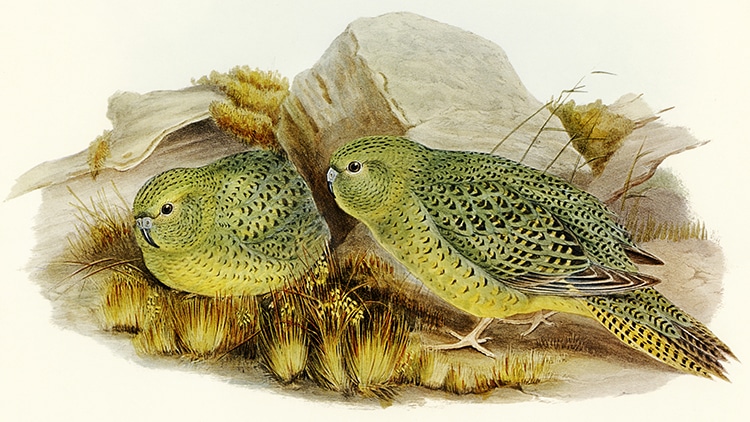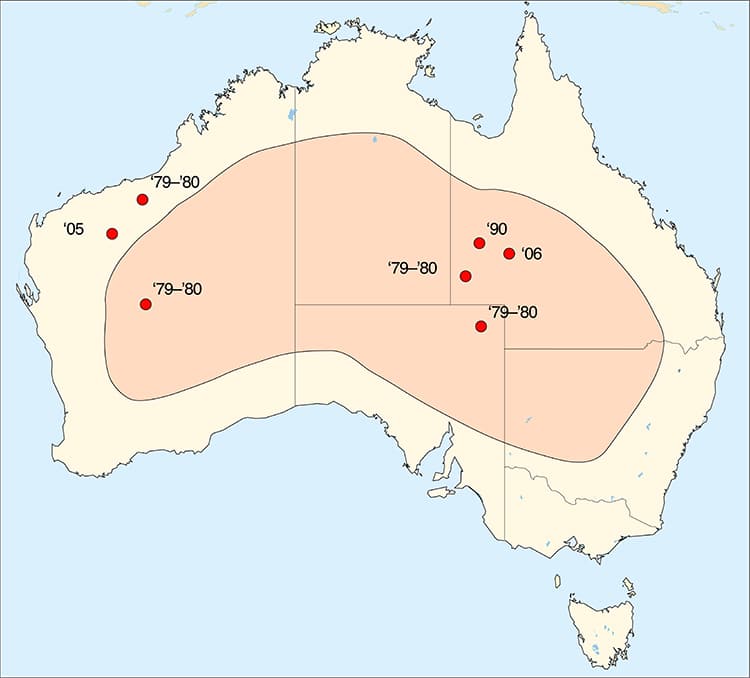Pezoporus occidentalis drawn by Elizabeth Gould in 1890.
Among these are petite penguins, sand pipers, and tropical cockatoos.
For most of the 20th century, the species was thought to be extinct.

Pezoporus occidentalis drawn by Elizabeth Gould in 1890. (Photo:Wikimedia Commons, Public domain)
Sightings were virtually nonexistent, and today remain exceptionally rare.
Since the 2010s , scientists have been seeking the birds with fervor.
Photographs and recordings of alleged sightings can be quitecontested, but are thrilling when verified.

(Photo: KimvdLinde viaWikimedia Commons,CC BY-SA 3.0)
The new population, the largest known, was discovered in Western Australia.
It is located in the Ngururrpa Indigenous Protected Area (IPA) which is run by the Ngururrpa themselves.
Local Indigenous rangers partnered with researchers to survey the region with song meters.
This result was reached by calculating the number of individuals based on unique cries, and estimating from there.
We the Ngururrpa Rangers have been looking for Night parrots since 2019.
The team also studied the threats to the birds, including natural predators and environmental hazards.
Fire is the main risk, they learned.
The magnificent night parrot was believed extinct for a century.
Now, the largest known population of the creature has been discovered in a remote corner of Australia.